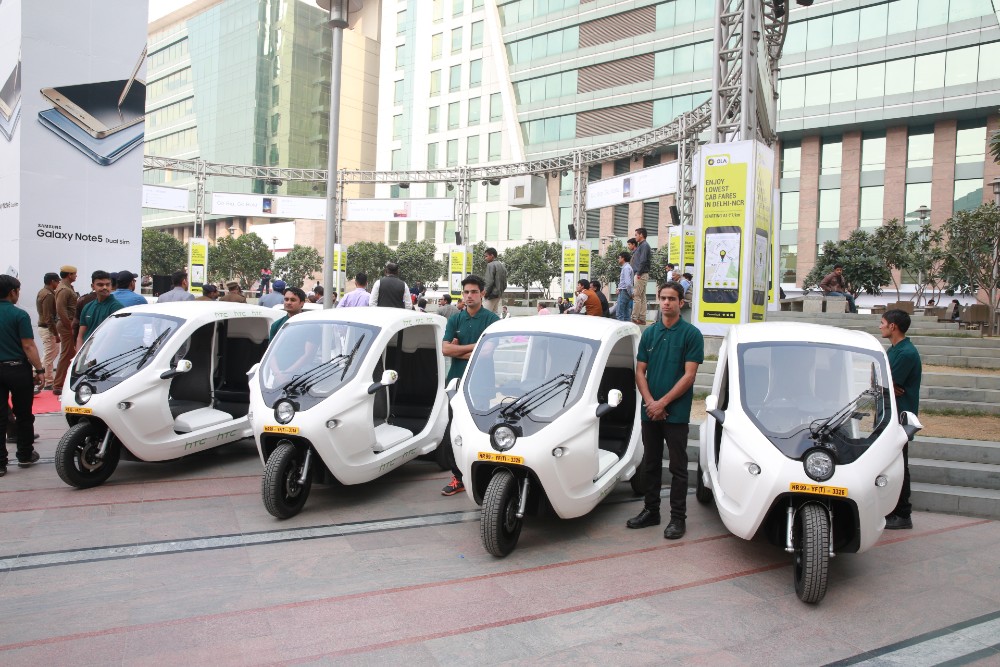
Auto-rickshaw Market in India – Opportunities for Electrification
In India, a large part of the daily transport takes place with two and three-wheelers. These are driven by exclusively following the internal combustion engines with low or no exhaust emissions. This has created huge problems with air pollution. Of the world’s 20 cities with the worst air quality, 13 are in India. Worst of all is New Delhi and the biggest reason is traffic (estimated to account for 60% of the problem). Clean Motion has therefore developed the next generation of efficient and environmentally friendly vehicles to meet these transport needs.
With a growing transport need linked to these limitations, there is a unique opportunity for companies that can offer the same seamless vehicle but with new levels with regard to noise, local emissions and global environmental impact and ultimately safety. The design of today’s conventional tricycles is outdated and virtually unchanged since the introduction of the vehicle type in the late 1940s. A modern, attractive design evokes a lot of attention and creates unique opportunities for further earnings through advertising revenue.
Market Overview
Indian auto-rickshaw market is expanding rapidly. There are more than 5 million registered vehicles and there is annual sale (including fleet replacement) of 500,000 units in India alone.
In 2011, India’s total population was 1.23 billion, of which 31.17% lived in urban areas and it is projected that urban population of India will reach 590 million (38%) by 2030. There would be at least 60 cities with a million plus population, at present the figure stands at 42 cities. Auto-rickshaw is one of the key modes of transport in most of India cities. As there will be more urban centre in India, the demand for auto-rickshaw will grow further. According to NSSO report, buses are the most preferred mode of transport in both rural and urban India, followed by auto rickshaws. Both types of journey are included in domestic purpose or for entrepreneurial activity for the survey.
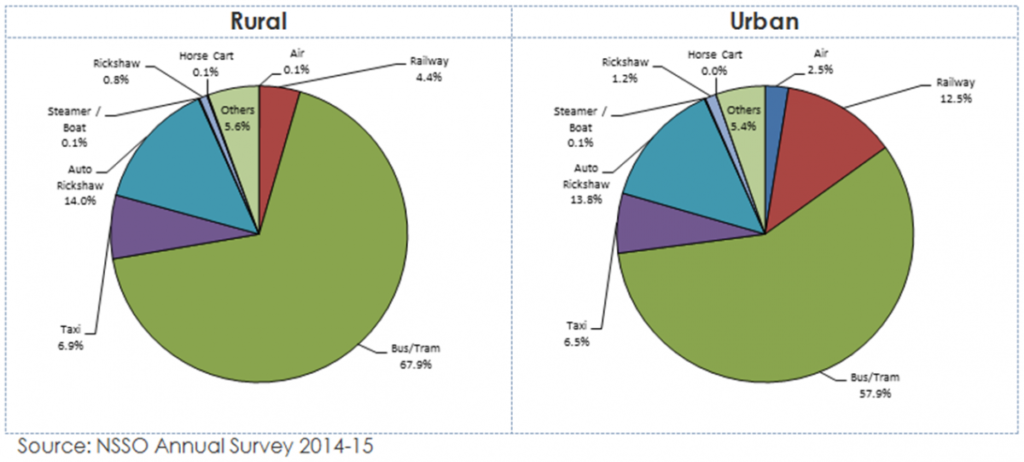
Government of India is keen to promote electric auto-rickshaw owing to their wide spread use. Department of Heavy Industries (DHI) has proposed to include electric auto-rickshaw under the FAME subsidy.
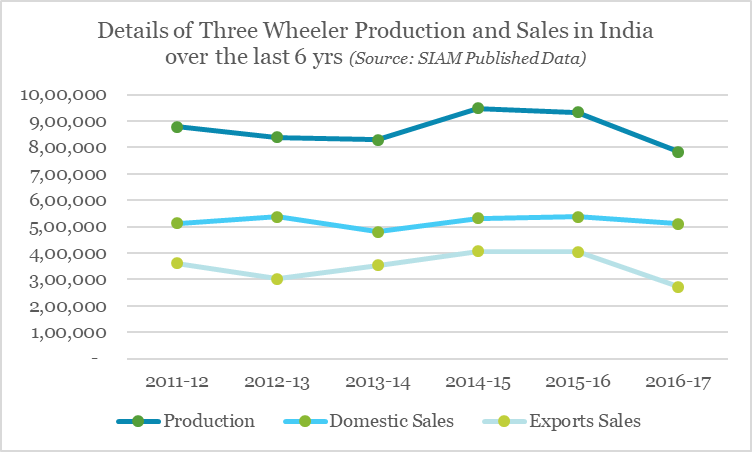
Regulatory Framework
Auto Rickshaws are regulated by the RTO (Regional Transport Office). The manufacturer requires homologation of the vehicle with the certification agency. After the technical certificate, the manufacturer requires to apply for state approval and trade certificate from each state. After the state approval, the auto-rickshaw can be sold to the individual or the company.
The company or driver needs to take permit from the authority. The permits are issued by the Regional Transport office. One needs a permit to ply regularly in the district for offering auto Rickshaw on-hire which is valid for five years and for temporary purposes (visit places outside the region or state) temporary permits are issued. The registration and permit is not a major issue in India, except for Delhi. Maharashtra decided to do away with the cap on the number of rickshaw permits in the state (earlier, there was a cap of 150,000 vehicles in Mumbai city).
Reasons for Shift to Clean Mobility
- Air Quality Indices for India indicate that the air in many cities of India is no longer healthy. Automobile related pollution has been one of the major causes for this.
- Aspects related to global warming needs a shift to automobile solutions that reduces/ does not produce greenhouse gas emissions.
- The need to reduce dependency on a fossil-fuel based economy. India’s crude oil imports for 2014-15 was 112 billion dollars (approximately Rs. 700,000 crores). In comparison, the allocation for the Mahatma Gandhi National Rural Employment Guarantee Scheme, in budget 2017-18, is Rs. 48,000 crores.
- India can become a global provider for clean mobility solutions and processes that are affordable and scalable.
- Energy efficiency and emission reduction has improved in automobiles. Yet, the growth in total number of vehicles on road, and the resulting total pollution and total energy consumption removed all gains made by improvement in energy efficiency and emission reduction by automobiles. Energy efficiency measures and pollution control measures did not keep pace with the sales growth in vehicles. The total number of vehicles registered in India has been 5.4 million, 11 million, 33 million, 40 million and 210 million in the years 1981, 1986, 1996, 2000 and 2015, respectively.
This indicates a 3,500+ % growth in the total number of vehicles between 1981 and 2015. The total number of vehicles sold in India increased between 15,481,381 in 2010-11 to 20,469,385 in 2015-16 indicating a 30+ percentage growth in this five year period.
Electric Auto-rickshaw
In 2011 a few traders began importing CKD kits of electric rickshaws. These were cheap, costing under USD 1,000. The electric rickshaws met with a considerable demand as there was no safety certification, RTO compliances and were available to the buyers for under INR 100,000. The e-rickshaw (as it is popularly known) has penetrated large parts of the country and estimated volumes in India exceed 1.0 million on road.
The introduction of FAME-II focussed on sustainable “Public Transport Solutions”. The realization that long term solutions for clean transportation would need a paradigm shift to alleviate the entire eco-system are the key drivers proposed in the new policy. The endorsement of Public Transport Fleet Operations for faster scaling of electric vehicles has generated considerable interest from the corporate automobile manufacturers in India and abroad. In last 2 years, announcements from Ashok Leyland, Volvo, JSPL, TVS, Kinetic, Bajaj, Tata Motors and Sun Mobility have crystallised the market for better quality products and technologies.
The FAME 2 policy envisaged a shift to induction of better technologies in manufacturing of electric vehicles. The government is assertively pushing to move to better battery technologies, which is a key driver to the success of a larger adoption by the consumer.
Currently, there are very few manufacturers in India which has an electric auto-rickshaw. There are players in the conventional Diesel/CNG three-wheel vehicles, developed with internal combustion engines. There has also been a lot of cheap electrical vehicles (e-rickshaws), mainly Chinese using lead acid batteries. Generally, these vehicles are of a very simple technique, low quality and poor reliability.
Some of key electric auto-rickshaw players in India are:
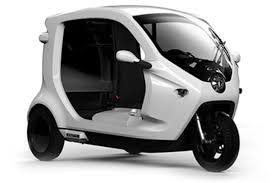 | Clean Motion (Zbee India) – is an light electric three-wheeled vehicle that comes in two versions; with a rear seat or with a cargo space. The company is running around 100 vehicles in Northern India. |
 | ETO Motor – has developed ranges of electric vehicles and currently operating these vehicles as last mile connectivity with metro network in India. |
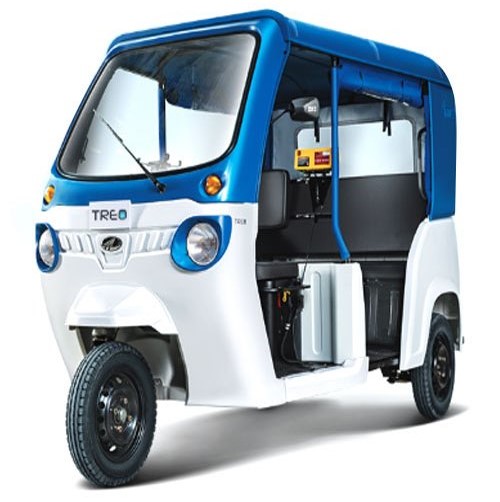 | Mahindra Treo – is the latest product from Mahindra Electric and operate on Lithium-ion batteries technology. The vehicle design is very similar to earlier conventional autos. |
